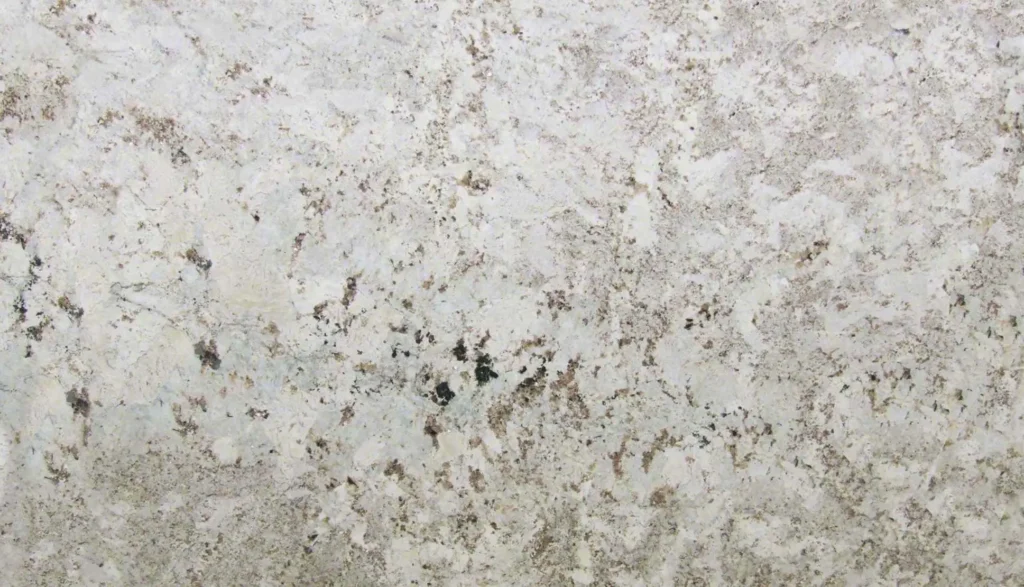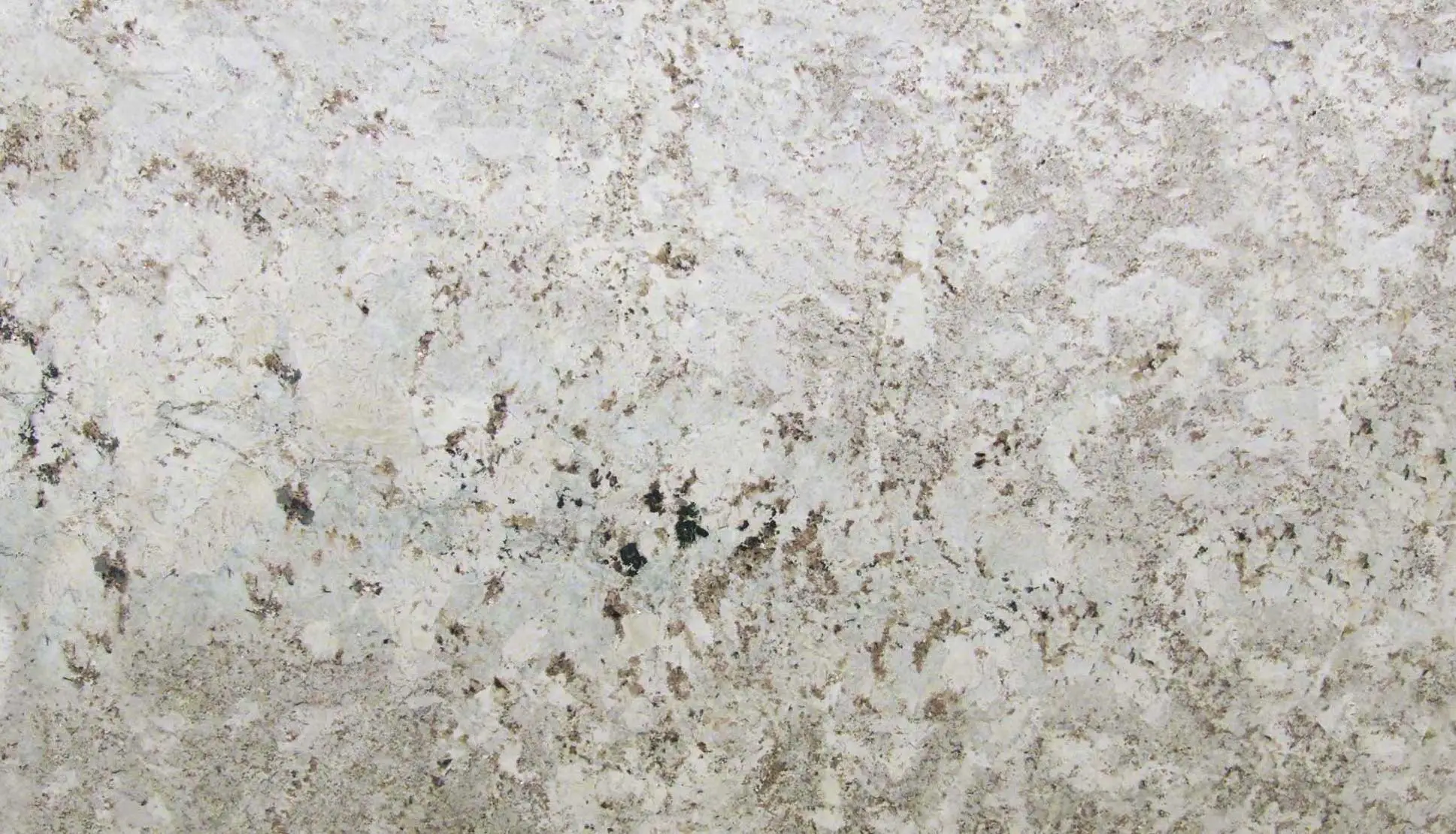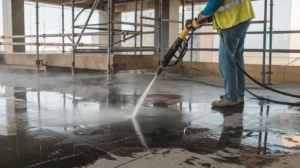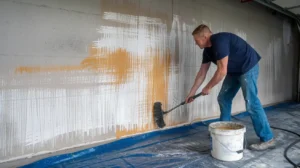White leathered granite countertops are a unique and sophisticated option for kitchen surfaces. Unlike traditional polished granite, white leathered granite countertops undergo a specialized finishing process that results in a textured, matte appearance resembling leather.
This distinctive texture adds depth and character to the countertop, making it a popular choice among homeowners and designers seeking a modern yet natural look for their kitchens. White leathered granite countertops offer a blend of elegance and durability, making them suitable for various kitchen styles, from contemporary to rustic.
How to Care for White Leathered Granite Countertops

Caring for white leathered granite countertops requires a combination of regular cleaning and maintenance practices, avoiding harsh cleaners and abrasive tools, proper sealing, and prompt stain removal. Here’s a detailed guide on how to care for your white leathered granite countertops:
Regular Cleaning and Maintenance Routine:
Daily Cleaning: Wipe down the countertops with a soft cloth or sponge and warm water. This helps remove any surface dirt, spills, or crumbs.
Weekly Cleaning: Use a mild dish soap diluted in water to give your countertops a deeper clean. Avoid using acidic or abrasive cleaners as they can damage the surface of the granite.
Drying: Always dry the countertops thoroughly after cleaning to prevent water spots and streaks. Use a clean, dry cloth or paper towel for this purpose.
Avoiding Harsh Cleaners and Abrasive Tools:
Harsh Cleaners: Avoid using cleaners containing bleach, ammonia, or citrus-based ingredients as they can cause discoloration and etching on the surface of the granite.
Abrasive Tools: Never use abrasive scrubbing pads or scouring powders on your white leathered granite countertops as they can scratch the surface and dull the finish. Stick to soft cloths, sponges, or non-abrasive cleaning tools.
Sealing Recommendations:
Initial Sealing: White leathered granite countertops should be properly sealed upon installation. Consult with your installer or supplier for recommendations on the type of sealant to use.
Regular Sealing: Reapply sealant as needed, typically every 1-3 years depending on usage and the type of sealant used. To test if your countertops need resealing, drip a few drops of water on the surface. If the water beads up, the sealant is still effective. If it absorbs into the granite, it’s time to reseal.
Sealant Application: Follow the manufacturer’s instructions for applying the sealant. Generally, you’ll clean the surface thoroughly, apply the sealant evenly with a clean cloth or sponge, allow it to penetrate the granite for the recommended time, and then wipe off any excess sealant.
Addressing Stains Promptly:
Immediate Action: Clean up spills as soon as they occur to prevent staining. Blot the spill with a clean cloth or paper towel rather than wiping, as wiping can spread the stain.
Stain Removal: For stubborn stains, make a paste using baking soda and water and apply it to the stained area. Let it sit for a few hours or overnight, then gently scrub with a soft brush or sponge. Rinse thoroughly with water and dry the area.
Can Existing Granite Countertops Be Leathered?
Explanation of the leathering process:
Leathering is a finishing technique applied to granite countertops to achieve a textured, matte surface resembling leather. It involves using diamond-tipped brushes or pads to create a slightly rough texture on the surface of the stone.
This process enhances the natural color and veining of the granite while providing a unique tactile experience. The result is a countertop with a distinctive appearance that adds character and depth to the kitchen or bathroom space. For professional guidance or services contact Stone Sealer Restoration which is best in business.
Feasibility of leathering existing granite countertops:
In most cases, it is possible to leather existing granite countertops. However, the feasibility depends on several factors including the condition of the existing countertop, the type of granite, and the skill level of the stone fabricator or contractor performing the leathering process.
If the granite is in good condition and the surface is smooth and free of any major damage or imperfections, it can typically be leathered without issues. However, if the granite is heavily damaged or has significant wear and tear, it may not be suitable for leathering and may require replacement instead.
Potential challenges and considerations:
Compatibility: Not all types of granite are suitable for leathering. Some granites may not respond well to the process or may not achieve the desired texture and appearance. It’s essential to consult with a professional stone fabricator or contractor to determine if leathering is a viable option for your specific granite countertop.
Existing Finish: If your granite countertop already has a polished or honed finish, it may need to be removed or altered before leathering can be applied. This additional step adds complexity to the process and may increase the cost and time required for the project.
Skill and Experience: Leathering granite countertops requires specialized equipment and expertise. It’s crucial to hire a skilled and experienced stone fabricator or contractor who has a proven track record of successfully leathering granite countertops.
Cost: Leathering existing granite countertops can be more expensive than simply polishing or honing them. The additional labor and materials required for the leathering process can increase the overall cost of the project. It’s essential to consider your budget and weigh the benefits of leathering against the potential cost.
Disruption: Depending on the size of the countertop and the extent of the work required, leathering existing granite countertops can cause some disruption to your kitchen or bathroom space. It’s important to plan accordingly and discuss any potential inconveniences with your contractor before starting the project.
Normal Granite Countertops vs Leathered Granite Countertops
Comparison of appearance and texture:
Normal Granite Countertops: Normal granite countertops have a polished surface that offers a glossy and reflective appearance. The texture is smooth and sleek, showcasing the natural patterns and colors of the stone.
Leathered Granite Countertops: Leathered granite countertops undergo a different finishing process that creates a textured, matte surface. The texture resembles leather, with a slightly rough feel. This finish tends to mute the colors and patterns of the stone, giving it a more subdued and rustic look compared to polished granite.
Differences in maintenance requirements:
Normal Granite Countertops: Polished granite countertops are relatively easy to clean and maintain. They require regular sealing to protect the surface from stains and etching caused by acidic substances.
Leathered Granite Countertops: Leathered granite countertops may require less frequent sealing compared to polished granite because the textured surface is less prone to showing fingerprints, watermarks, and smudges. However, the texture can trap more debris, requiring extra attention during cleaning.
Cost comparison:
The cost of granite countertops, whether polished or leathered, can vary based on factors such as the rarity of the stone, its origin, thickness, and installation costs. However, in general:
Polished Granite Countertops: Polished granite tends to be more common and may have a slightly lower price point compared to leathered granite.
Leathered Granite Countertops: The leathering process may add some cost to the overall price of the granite due to the additional labor involved in creating the textured finish. Therefore, leathered granite countertops may be slightly more expensive than their polished counterparts.
Suitability for various kitchen designs and styles:
Normal Granite Countertops: Polished granite countertops are versatile and can complement various kitchen designs, including modern, traditional, and contemporary styles. The glossy finish adds a touch of elegance and sophistication to the space.
Leathered Granite Countertops: Leathered granite countertops are well-suited for rustic, farmhouse, or transitional kitchen designs. The textured surface adds warmth and character to the kitchen, making it a popular choice for homeowners looking for a more natural and aged appearance.
Conclusion
White leathered granite countertops offer a blend of elegance and functionality, making them a popular choice for modern kitchens and bathrooms. One of the key benefits of white leathered granite countertops is their striking appearance.
The leathered finish gives the surface a unique texture, adding depth and character to the space. Additionally, the white color of the granite brightens up the room, making it feel more spacious and inviting. Feel free to contact us for any type of services or query like white leathered granite countertops.
FAQs
What Is White Leathered Granite?
White leathered granite is a type of natural stone countertop characterized by its white color and textured, leather-like finish. It offers a unique aesthetic that sets it apart from polished or honed granite.
How Do White Leathered Granite Countertops Differ From Other Finishes?
Unlike polished granite, which has a glossy, reflective surface, and honed granite, which has a smooth, matte finish, white leathered granite countertops have a textured surface that resembles leather. This finish adds depth and character to the countertop.
Are White Leathered Granite Countertops Durable?
Yes, white leathered granite countertops are highly durable and resistant to scratches, heat, and stains. However, like all natural stone countertops, they require proper care and maintenance to preserve their appearance and longevity.
How Do I Clean And Maintain White Leathered Granite Countertops?
To clean white leathered granite countertops, use a mild detergent and warm water, avoiding harsh or abrasive cleaners that can damage the surface. It’s also essential to seal the countertops periodically to protect against stains and maintain their appearance.
Are White Leathered Granite Countertops Suitable For All Kitchen Designs?
While white leathered granite countertops can complement various design styles, including modern and contemporary kitchens, they may not be ideal for every aesthetic. It’s essential to consider the overall look and feel of your kitchen when selecting countertops to ensure they harmonize with the space.
Can White Leathered Granite Countertops Be Repaired If Damaged?
Minor scratches or blemishes on white leathered granite countertops can often be repaired using specialized products or techniques. However, significant damage may require professional repair or replacement of the affected area.






